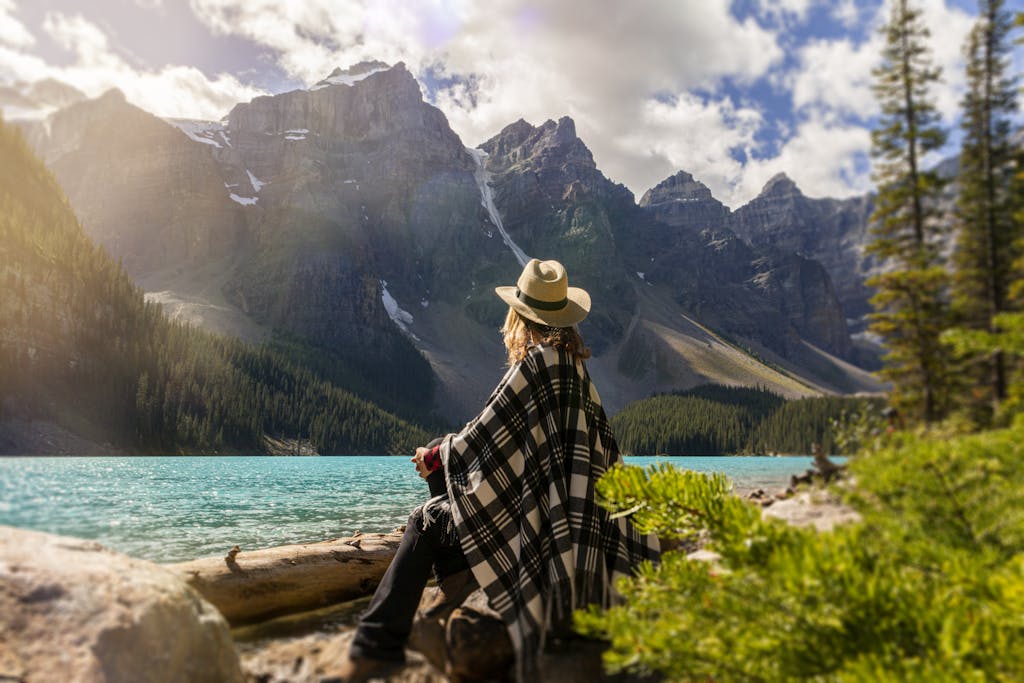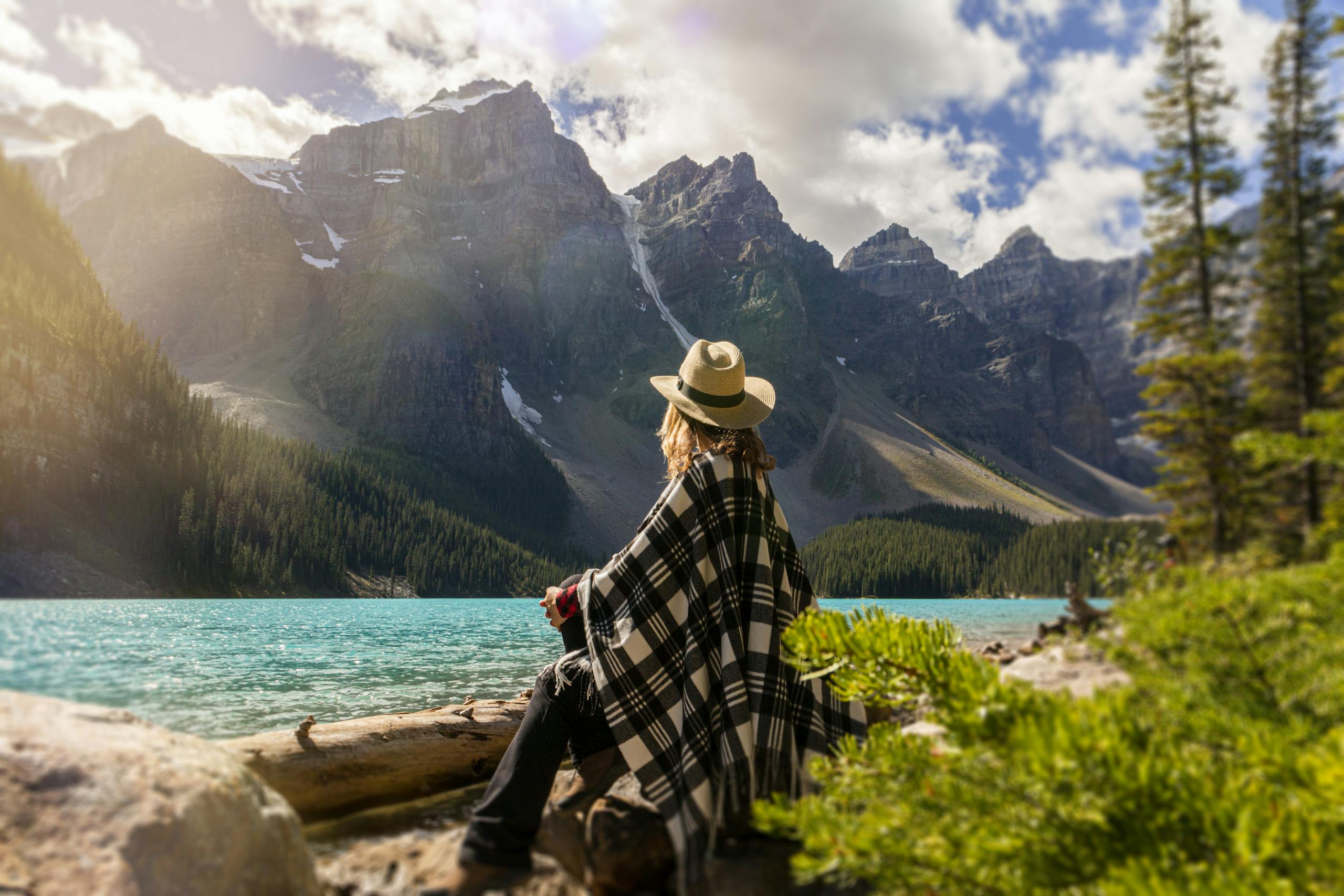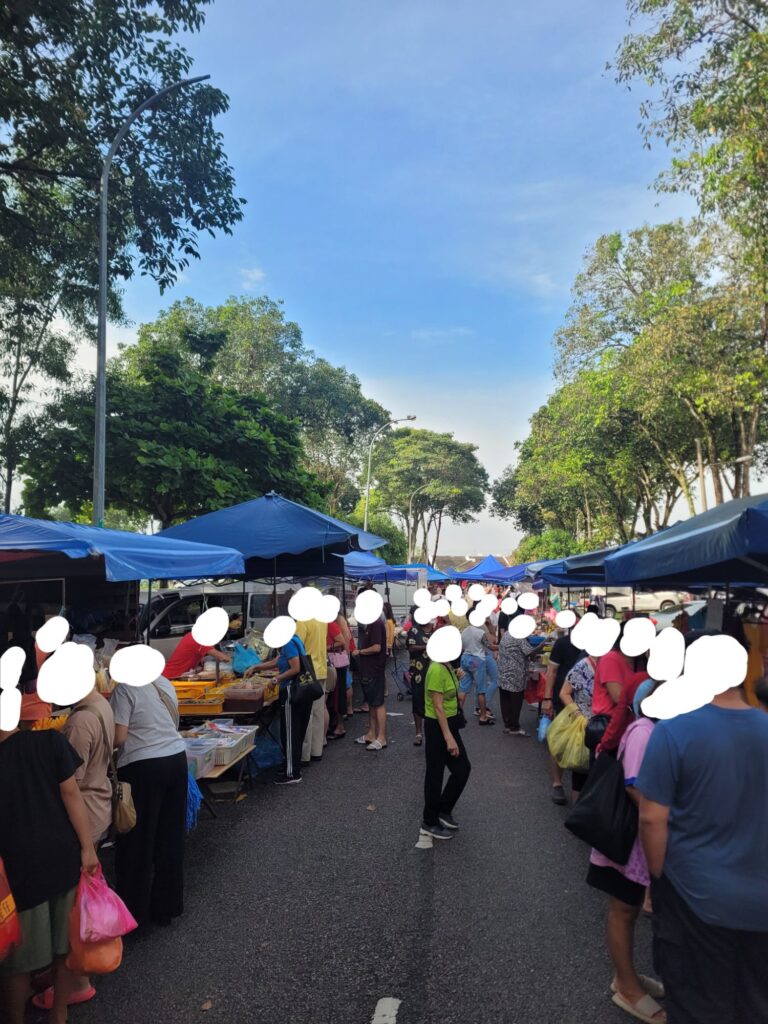🔮 Prologue: The Invitation to Travel Deeper
Travel can be more than a series of sights and checklists. It can and should be an experience that changes you in any little way possible. Imagine stepping beyond the well-worn tourist path, away from all the crowds. Picture yourself not just getting to a place and telling others that you have been, but being able to close your eyes at another time and teleport yourself back to that moment. This is an invitation to travel deeper. This post is your guide to a journey that values presence, learns with humility, and fosters genuine connection. It is a path to travel that changes you.
1. 🧭 Introduction: Why Immersive Travel Matters
In our fast-paced world, tourism often becomes a race. We rush from one landmark to another, snapping photos after photos, and finding yourself back home later on wondering what did you exactly do at that place. Why should we choose to travel deeper?
Immersive travel offers a different way. It contrasts sharply with surface-level sightseeing. Think of the difference between quickly taking a photo of a bustling market versus spending an hour there. In that hour, you might observe vendors, listen to local chatter, and perhaps even share a smile or a brief exchange.
I was on a road trip in Cappadocia, Turkey, trying to cover as much ground as possible before the day ends. Following Google Maps, I noted that there was an ‘error’ in the map and I could not pass through a road in a town. I took a detour, yet I could not get back to the street that was suggested by the map. It turned out to be a local morning market.
I decided to get off the car with my wife and explore. We were the only foreigners there in the midst of locals trying to get their morning shopping done. Almost no one spoke any English compared to the touristy parts of Turkey. We went around purchasing items we have never seen before (and at local prices nonetheless) and even used Google Translate to communicate with the vendors. People were buying things in bulk – we wanted to get some fruits to try and the shopowner ended up giving us a few apples for free (we communicated via gestures but I will never forget the kindness showed on his face). This was never something that I could have planned for with research but I got to live a slice of local life and experience the hospitality unexpectedly.
The purpose of immersive travel is to gain more than just stamps in a passport or to show off to others online through social media the places you have been. It offers:
- Lasting memories: Experiences that resonate long after you return home.
- Cultural understanding: A richer appreciation for different ways of life.
- Personal transformation: New perspectives that can shape your worldview.
When you travel immersively, your role shifts. You move from being a passive observer to an engaged participant. This guide will show you how.
2. 🌍 What Is Immersive Travel?
So, what is immersive travel? In simple terms, it means engaging deeply with a place and its culture. It is about seeking understanding and connection, not just entertainment or escape. It is travel that prioritizes experience over itinerary.
Immersive travel rests on four key ideas:
- Curiosity over certainty: Approach new places with a desire to learn, not with preconceived notions. Ask questions. Spot the differences. Wonder why things are done a certain way.
- Openness over control: Embrace the unexpected. Things might not go as planned, and that is often where the best experiences lie.
- Slowness over speed: Allow time for genuine interactions and observations. Rushing prevents deep connection and being present.
- Respect over consumption: View cultures and communities with regard. Interact in ways that are considerate and mutually enriching. Avoid treating people or places as mere commodities.
Let’s clear up some common myths about immersive travel:
- Myth: “I need to speak the language fluently.”
- Reality: While learning some phrases is helpful and respectful (more on that later), you do not need fluency. A smile, gestures, and a willingness to try go a much longer way.
- Myth: “Immersive travel is only for backpackers or young people.”
- Reality: Anyone, at any age or travel style, can travel immersively. It is about mindset, not demographics.
- Myth: “It’s too difficult or dangerous.”
- Reality: Like any travel, it requires common sense and preparation. But deep travel is often found in safe, everyday interactions.
The immersive traveler is someone who listens more than they talk. They observe their surroundings and people. They try to blend in, not to be invisible, but to be a respectful presence. They are students of the world, always learning.
3. 🧠 Mindset Shifts for Deeper Travel
Immersive travel begins in your mind. Before you even pack your bags, consider these internal shifts. They prepare you for a richer experience.
- From checklisting to detouring:
- Old way: Rushing to see every “must-visit” sight.
- New way: Allowing yourself to get lost down an interesting alleyway. Being open to spontaneous discoveries that were not included in your plans.
- From fast-forwarding to observing:
- Old way: Constantly thinking about the next activity or photo, or whether you have enough time to see everything.
- New way: Taking a deep breath and pausing to notice small details. The wind blowing on your skin, the heat from the sun, the vibrant blue of the sky.
- From producing (content) to being present:
- Old way: Experiencing everything through a phone screen, focused on capturing the perfect shot for social media.
- New way: Putting the phone away when you can. Soaking in the moment directly with your senses. Prioritizing remembering the experience in your mind over the documentation of it.
These reflections help you prepare emotionally and mentally. They help you welcome the uncertainty, the occasional awkwardness, and the unexpected delight that immersive travel brings.
4. 🏠 How to Live Like a Local While Traveling
One of the best ways to travel deeper is to experience a place as its residents do. Here are tactical strategies to help you live like a local (even just for a bit in your limited time in a foreign land):
- Choose your accommodation wisely:
- Stay in homestays or family-run guesthouses. This often provides direct interaction with locals.
- Consider apartment rentals in residential neighborhoods, away from tourist hubs (though this may be difficult to locate and may add on to your travelling time)
- Shop and eat where locals do:
- Explore local supermarkets for groceries or snacks. Observe what people buy. Compare what they have to what you can find at home.
- Eat at small, local restaurants or food stalls. Ask for recommendations from your host or people you meet eg. taxi drivers. Look for places busy with local customers and not just foreign tourists.
- Navigate like a resident:
- Use public transportation. It is a great way to see daily life unfold and people-watch.
- Walk extensively through different neighborhoods. This allows for spontaneous discoveries.
- Observe local routines:
- Notice when people eat their meals, when shops open and close, and when parks or public squares are busiest.
Always remember respect. Your goal is to participate, not to intrude. “Look with wonder, not intrusion. Don’t stare.”
5. 🤝 Connecting with Local Culture Respectfully
Meaningful connection is at the heart of immersive travel. These are the things you can do and prepare for:
- Learn basic phrases:
- Even simple greetings like “Hello,” “Thank you,” and “Excuse me” in the local language show effort and respect. This never fails to put a smile on their face.
- Use a translation app on your phone for more complex interactions.
- Understand and observe etiquette:
- Research basic customs before you go. For example, rules about removing shoes indoors, appropriate greetings (a bow, a handshake, etc.), or table manners.
- When in doubt, observe how locals behave and follow their lead.
- Photography and sharing:
- Always ask for permission before photographing people. A smile and a gesture towards your camera can often convey your request.
- Be mindful of what you share online. Avoid images or stories that could perpetuate stereotypes or compromise someone’s privacy.
- Ask respectful, open-ended questions:
- Instead of questions with simple yes/no answers, try questions that invite conversation.
- Examples: “Can you tell me more about this tradition?” “What is a favorite local food I should try?”
Remember, deep connection requires humility and patience. You are a guest. Listen more than you speak. Be genuinely interested in understanding other perspectives, even if they differ from your own and don’t judge.
6. 🧘 Slowing Down and Being Present
The idea of “being present” can feel abstract. How do you actually do it while traveling? It involves consciously slowing your pace and engaging your senses.
- Practice “one-place immersion”:
- Instead of rushing between multiple sites, choose one place – a park, a café, a neighborhood square – and find a seat and just breathe.
- Dedicate time to simply being in that single spot. Observe the flow of life.
- Try simple rituals:
- Journaling: Spend 15-20 minutes each day writing down your observations, feelings, or do some sketching. This helps process your experiences and help you remember how you felt then.
- Tech-free time: Sit at a café or on a bench without your phone or any distractions. Just watch the world go by.
- Learn local music or crafts: If opportunities arise, take a short class or watch an artisan at work. Engaging in a local activity can become a core memory of the trip.
- Use all five senses:
- Sight: Notice colors, textures, light, and shadow. What is familiar and what is different to where you came from.
- Sound: Listen to the languages, music, street sounds, and nature.
- Smell: What are the aromas of the local food, flowers, or markets?
- Taste: Savor the taste of the food you place in your mouth, remember how the texture feels like.
- Touch: Feel the texture of local fabrics, the warmth of the sun, or the coolness of a stone wall (appropriately, of course).
Empower yourself to leave gaps in your schedule. These empty spaces are where serendipity happens. Spontaneous encounters and unexpected discoveries often become the most cherished memories.
7. 🧰 Practical Tools and Resources for Immersive Travel
While mindset is key, a few practical tools can support your immersive journey. This is your “toolkit” section (will be updated as time progresses)
- Helpful Apps:
- Google Translate: Useful for translating text, spoken words, and even text in images. Download languages for offline use.
- Culture Crossing Guide: Provides insights into cultural etiquette for many countries. (Or similar reputable cultural guide apps).
- Duolingo (or similar language apps): Great for learning basic phrases before and during your trip.
- Google Maps (download the maps beforehand): Essential for navigating without needing constant data.
- Platforms for Local Connections (I have to admit I do not have much experience with these)
- WithLocals: Connects travelers with locals for tours, workshops, and home-cooked meals.
- Couchsurfing Hangouts/Events: Even if you are not couch-surfing, the app often lists local gatherings or events where you can meet people.
- Meetup.com / Eventbrite: Check for local community events, workshops, or groups that align with your interests.
- Local Facebook groups: Sometimes community groups or event pages list local happenings.
- Packing Essentials for Immersion:
- A notebook and pen: For journaling, sketching, or writing down phrases. Reflecting on your experience and jotting it down at the end of the day helps.
- Versatile, culturally appropriate clothing: Choose items that are comfortable and respect local dress norms
- A small, thoughtful gift from home (optional): If you anticipate staying with a host family or forming a close connection, a small, non-ostentatious gift can be a nice gesture.
These tools help you prepare for immersion without overplanning. The goal is to be equipped, yet flexible.
8. ⚠️ Common Immersive Travel Challenges and How to Handle Them
Immersive travel is rewarding, but it can also present challenges. Acknowledging these can help you navigate them with grace.
- Culture Shock:
- What it is: Feeling disoriented, confused, or anxious when faced with a very different cultural environment.
- How to reframe it: Recognize it as a normal part of deep travel. It means you are truly experiencing something new. Be patient with yourself. Take breaks if needed. Talk about your feelings with a travel companion or journal about them. Be open to things and keep an open mind. It is not easy at times and can be overwhelming.
- Language Barriers:
- The challenge: Difficulty communicating basic needs or understanding others.
- How to navigate: Use translation apps. Learn key phrases. Use gestures and body language. Smile. Patience and a sense of humor are your best allies. Don’t be frustrated. Most people appreciate the effort, even if your pronunciation is not perfect.
- Visit our Language Learning page to find out more
- Feeling Like an Outsider:
- The feeling: Moments of loneliness or not quite fitting in.
- When it’s okay to retreat: It is perfectly fine to need some downtime. You do not have to be “on” all the time. Retreat to a familiar comfort (like a quiet café or your room) to recharge. Balance engagement with self-care. You don’t have to push yourself for the sake of doing so.
- Safety Concerns:
- Balancing trust with street smarts: Immersive travel often involves trusting strangers, but it is crucial to maintain awareness of your surroundings.
- Tips: Research common scams in the area. Be aware of your belongings. Avoid poorly lit or isolated areas at night, especially if alone. Trust your intuition; if a situation feels uncomfortable, get out.
It is also vital to recognize boundaries.
- Respecting privacy: Not every space or moment is open for you to enter or observe. Private homes, ceremonies (unless explicitly invited), and personal moments don’t belong to you.
- Avoiding exploitation: Be wary of situations that might exploit vulnerable individuals or communities (e.g., some forms of orphanage tourism or slum tourism if not managed ethically by reputable organizations). Ensure your interactions are dignified and mutually respectful.
- Understanding context: Sometimes, a community may be dealing with internal issues or sensitivities where outside presence is not welcome or helpful. Be perceptive and avoid stirring up controversies.
9. 💬 Immersive Travel FAQ: Quick Answers for Curious Travelers
Here are quick answers to common questions about immersive travel.
- Do I need to speak the language fluently?
- No. Learning basic phrases is respectful and helpful, and fluency is not a requirement (nor practical/possible at times). Willingness to communicate through other means (gestures, apps) can go a long way.
- Is immersive travel only for long trips?
- No. You can practice immersive principles even on a short trip or a weekend getaway. It is about your approach, not the duration. Even five minutes can make time stop.
- What if I’m shy or introverted?
- Immersive travel is for everyone. You do not need to be an extrovert. Focus on observation, quiet engagement, and one-on-one interactions if large groups feel overwhelming. Listening is a powerful immersive skill.
- How do I know if I’m doing it “right”?
- There is no single “right” way. If you are approaching your travels with curiosity, respect, openness, and a desire to connect and learn, you are on the right path. Focus on the quality of your experiences, not on a checklist.
11. ❌ What Not to Do: Common Mistakes That Kill Authentic Travel
To truly travel deeper, it helps to know what behaviors can hinder authentic connection. Avoid these common mistakes:
- Over-planning or rigid checklisting: Sticking too strictly to an itinerary leaves no room for spontaneous discoveries or local invitations. All you can remember is rushing from point A to point B.
- Treating culture like entertainment: Local people and their traditions are not exhibits. Approach with respect, not as if you are at a theme park.
- Taking intrusive photos or videos: Always ask permission before photographing people up close. Avoid filming or photographing in sacred or private spaces without consent.
- Relying solely on guidebooks or online reviews: These can be starting points, but dare to explore beyond their recommendations. Ask locals for their favorite spots.
- Complaining about differences: Comparing everything to “how it is back home” (especially negatively) closes you off to appreciating the uniqueness of a place and can be off-putting to locals.
- Dressing inappropriately: Ignoring local dress norms can be seen as disrespectful and may create barriers.
- Bargaining too aggressively: While haggling is common in some cultures, understand the context. Do not try to bargain for every small item, especially if it means depriving a vendor of a fair profit.
Good immersive travel is a practice. It is about your intention and approach, not a performance.

🔁 Takeaways and Next Steps
You have reached the end of this guide, but hopefully, it is just the beginning of your journey into deeper travel.
Recap of Key Ideas:
- Immersive travel is about connection, understanding, and presence.
- It requires mindset shifts: curiosity, openness, slowness, and respect.
- Practical steps like living locally, learning phrases, and slowing down enhance the experience.
- Challenges are part of the journey; navigate them with grace and self-awareness.
Your Next Steps:
On your very next trip, big or small, try one or two of these simple things:
- Eat one meal at a place recommended by a local, not a guidebook.
- Spend some time in a public space (like a park or square) without your phone, just observing.
These small actions can open up new ways of seeing and experiencing the world.
Want to explore further? Read more on our blog:
- To be added.
Thank you for joining this exploration of deeper travel. Bookmark this post as your core reference. Share it with a friend who dreams of more authentic journeys.
We would love to hear from you! What is one immersive travel tip you have found valuable? Or what is one place where you felt a deep connection? Share your story or thoughts in the comments below.
And if you want more insights and inspiration for traveling deeper, join our upcoming newsletter for regular updates and exclusive content.
Happy travels, and may your journeys be filled with connection and moments that you will never forget.





